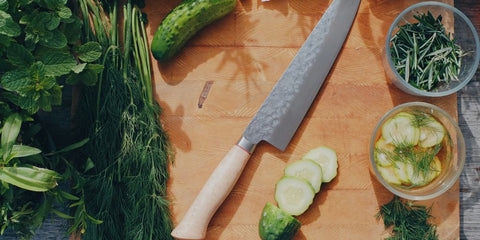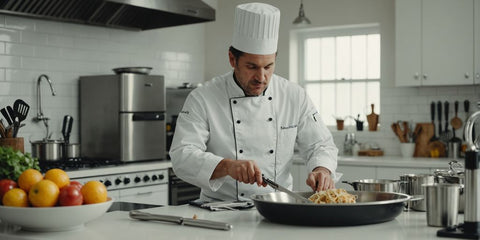Understanding the Difference Between Honing and Sharpening
Sharpening and honing are often confused, but they serve different purposes. Sharpening involves grinding away metal to create a new edge on a knife. This process is necessary when the blade becomes dull and can no longer cut effectively. On the other hand, honing doesn't remove metal. It realigns the existing edge, making the knife cut smoother. Honing is like a tune-up, while sharpening is more like major maintenance.
Honing and sharpening require different tools. Sharpening typically uses whetstones or electric sharpeners, which have abrasive surfaces to grind the metal. Honing uses a honing stone or honing steel, which is a rod made of steel, ceramic, or diamond-coated material. The honing steel helps to straighten the knife's edge without removing any metal.
Honing should be done regularly, even after each use, to keep the knife in good condition. Sharpening, however, should be done less frequently, only when the knife becomes noticeably dull. Over-sharpening can wear down the blade unnecessarily, so it's important to hone often and sharpen only when needed.
Step-by-Step Guide to Honing a Kitchen Knife
Before you start honing, make sure your kitchen knife and honing steel are clean. Hold the steel vertically, with the tip resting on a stable surface. Grip the knife handle firmly and place the heel of the blade at the top of the steel at a slight angle.
Draw the blade down and across the steel in a sweeping motion, maintaining a consistent angle. Repeat this action on the other side of the blade. Continue alternating sides for several strokes until the edge is realigned.
Avoid using too much force, as this can damage the blade. Maintain a consistent angle throughout the process. Don't rush; take your time to ensure each stroke is even and controlled.
Maintaining Your Knife's Edge Post-Honing
After honing your knife, it's important to keep up with regular maintenance to ensure it stays sharp. This includes cleaning the blade after each use and storing it properly. A clean, dry knife is less likely to rust or dull quickly. Always use a cutting board to protect the edge and avoid cutting on hard surfaces like glass or stone.
Signs Your Knife Needs Honing
Even with regular maintenance, your knife will eventually need honing again. If you notice that your knife is not cutting as smoothly or requires more force to cut through food, it's time to hone it.
When to Seek Professional Help
Sometimes, honing and regular maintenance aren't enough to keep your knife in top shape. If your knife remains dull after honing or if you notice chips or nicks in the blade, it may be time to seek professional help. A professional can sharpen the blade and fix any damage, ensuring your knife is as good as new. It also may be time to get a new kitchen knife. SolBlade knives are made from premium Japanese Damascus steel, giving each blade a razor-sharp edge and stunning design. SolBlade knives are made to last, and are affordable for everyone - from chefs to home cooks. Available styles include the 8" Chef's Knife, 7" Santoku Knife, and 3.75" Paring Knife. You can also purchase the full set of SolBlade knives to complete your culinary tool kit.



